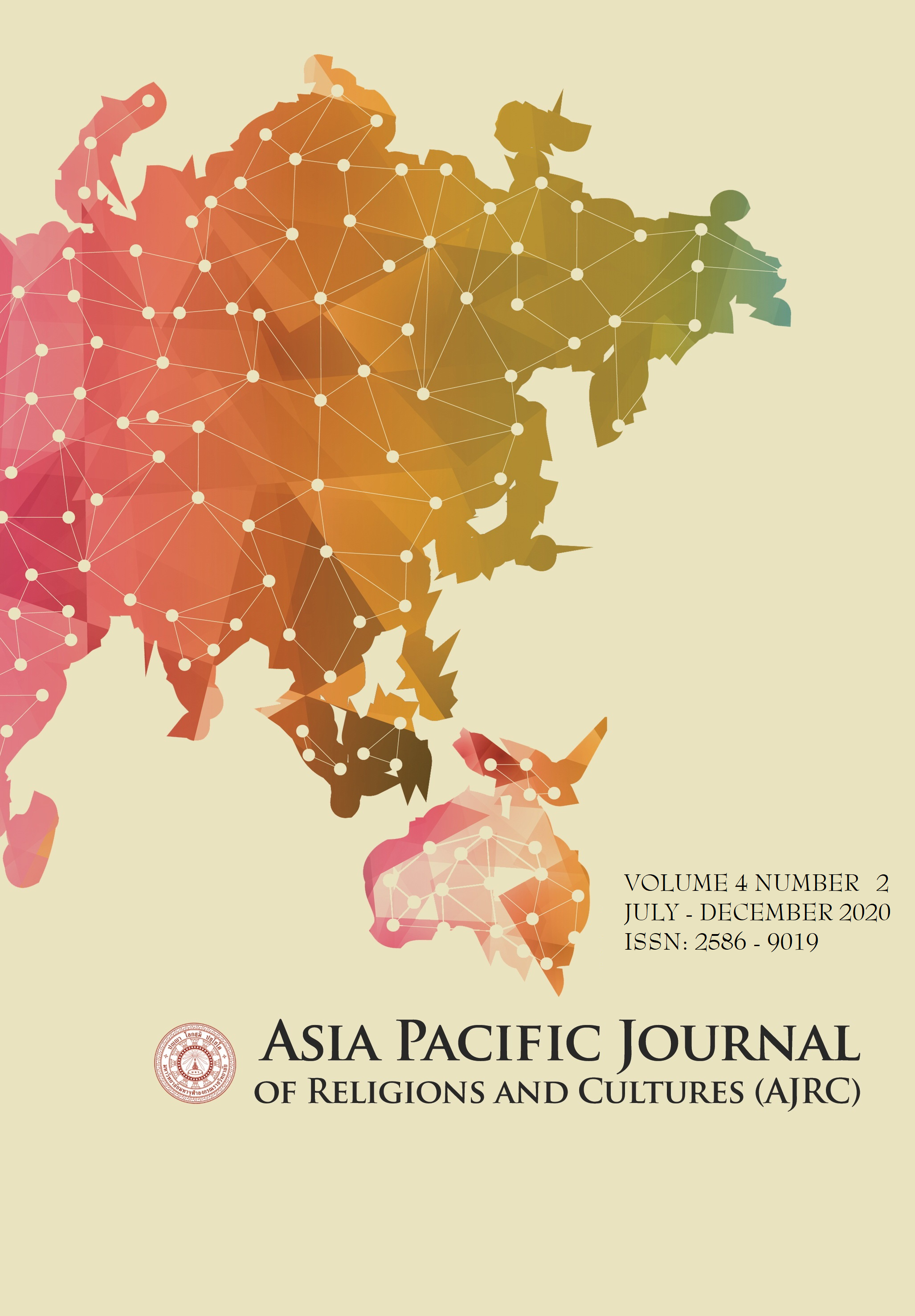Desanāhāra: Conceptual area for the interpretation of the doctrine in Buddhism
Main Article Content
Abstract
The article " Desanāhāra: Conceptual interpretation of the doctrine in Buddhism" aims to study the method of interpretation of the doctrine in important Buddhist scriptures. By adhering to the principles of Desanāhāra from the Nettipakorn script as a conceptual framework for interpretation, analysis / synthesis in this case study, the case study of the interpretation of the Buddha's words of Phramahakaccayna in Mathupindhika Sutta.
The results of the study were found that the conceptual framework of Buddhist interpretation based on the Desanāhāra principles which classified the principles into 6 categories. They are 1) Assāda,the Dharma that represents pleasant conditions, satisfying 2) Ādīnava the Dhamma shows unpleasant conditions that are not pleased, not satisfactory. 3) Nissaraṇa, the Dhamma shows the cause or state of overcoming the suffering, 4) Phala, the Dharma that shows benefits or advantage, 5) ) Upāya , the Dhamma that shows the ways to to cessation or extinction of suffering and 6) ) Āṇatti , the Dharma that shows to encourage and persuade to practice the Dhamma in daily life
The interpretation of Buddhist expressions in Mathupindhika Sutta is a description of Buddha's words by Phramahakaccayana, a monk who is excellent at explaining the Dharma in a nutshell and is also the author of the Desanahara in the Nettipakorn Scripture. If it was asked why I choose to study the interpretation of Buddhist words in Mathupindhika Sutta, the reason this sutra, the Buddha spoke to monks as a short Dharma topic. Those monks listened and wondered. Therefore they went to see Phramahakaccayana to help explain that topic. That Buddhist text says "Monks in various aspects of Papañcasaññā inevitably dominates men. If things that a person would be pleased to accept, abide by, have no that reason, this is the ultimate Rakhanuxai of conscience, etc. These unwholesome deeds are extinguished without rest in that reason quoted”.
The semantics from Buddhadhamma were interpreted along with Desanāhāra: 1) Feelings on the six organs of body were Assada, the pleasant phenomena. 2) The pleasant in the emotions coming from the six organs of body attached was Ādīnava, the spoiled penalty state. 3) The knowledge or reorganization truly on the six organs of body, the resolution to causes of suffering extinction. 4) The person’s mind was not taken over by Papañcasaññā, so it was the peaceful benefit result. 5) The procedure of recognition was the process leading to the end of suffer and 6) A person was not pleased and not grab the emotion, otherwise, his discipline controls his mind, it was Ānatti which encourage and persuade to practice the Dhamma.
Article Details
References
A. Primary Sources
Mahachulalongkornrajavidlayala .Ti-pitaka the issue by
Mahachulalongkornrajavidlayala.Bangkok: Mahachulalongkornrajavidlayala publisher, 2539.
B. Secondary Sources
(1) General books
Phra Dhammakittuwong (Thondee Suratecho). The Buddhist Proverb Interpret. 2nd Printed Bangkok: Leangchian Publisher, 2550.
Phrabrommakunaporn (P. A. Payutto). Buddhist Dictionary for vocabulary. 11th Printed. Bangkok: Mahachulalongkornrajavidlayala publisher, 2546.
_____. Buddhist Dictionary for vocabulary. 17th Printed. Bangkok:
Dhammasapa Buddhist publisher, 2554.
(2) Translation Books
Phramahakaccayna .Netipakorn. Translated by Phrakanthasarapiwong, Bangkok: Limited Partnership Thai delivery Publishing, 2050.
(3) Article
The Gradual Path as a Hermeneutical Approach ot the Dhamma, in Buddhist Hermeneu tics, “Interpret Principle in Netipakorn and Petakopates” By Phramaha Somboon Wutthikarô, OnlineSourceswww.mcu.ac.th/site/articlecontent_desc.php?artic le_id=455&articlegroup_id=1 02 (30 August 2558)

